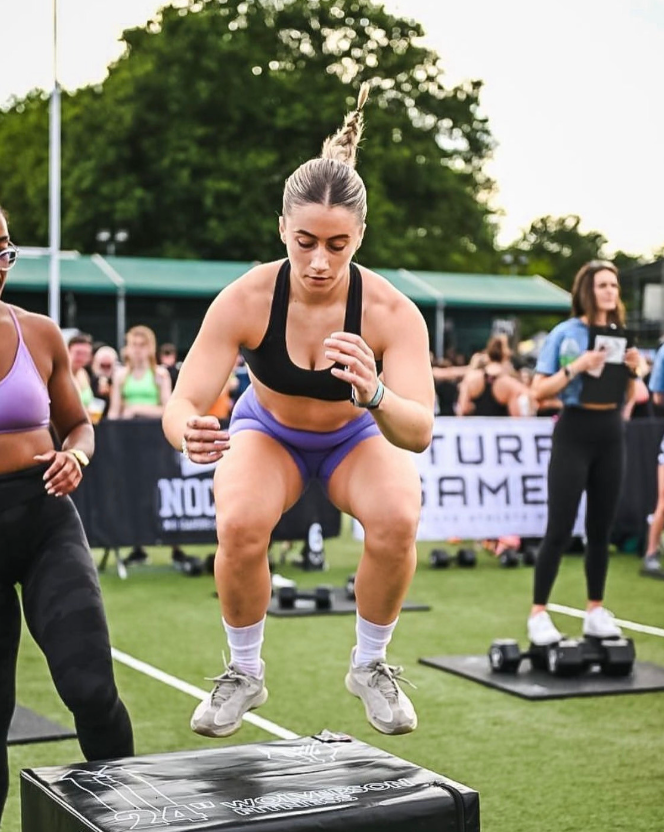Sports bras 101: How to find the perfect one for you
When it comes to buying your first sports bra … saying that it’s confusing af is an understatement. BUT it’s one of those things in life where the sooner you figure it out, the better! We at StrongHer have gathered intel on sports bras over the years of training ourselves, our coaches and hundreds of women with various backgrounds. So let’s talk sports bras - the StrongHer way.
Why do I need a sports bra?
Boobs, tits, tatas, the girls, breasts. Whatever you call them, they need to be looked after! Your breasts have no muscles to keep them in place (yes, yes, there’s your pecs, but those are under the breast tissue) when you exercise. Breasts, however, do have ligaments, which are strings of connective tissue that keep up the structural integrity of our girls and give them shape too. These ligaments are somewhat elastic and do the job when you need to go about your day to day business such as walking. However, when exercising, your breasts need some extra help, and this comes in the form of a sports bra! A sports bra reduces bounce, keeps them in place, reduces discomfort and pain and greatly reduces the risk of long term damage to the breast tissue. In fact, research has shown that breast pain is one of the main reasons why women stop exercising. So all pretty darn important reasons, if you ask us!
Then, there’s performance! Not wearing the right sports bra (or a sports bra at all) can really get in the way of your workout. For example, it’s been found that “Excessive breast movement causes women to shorten their running stride length by around 4cm” - pretty significant, right? Over the course of a marathon that equates to adding another mile onto the distance. And while not all of us are up for running a marathon (or running at all!), your performance in any high to medium impact exercise will be hindered if you are not wearing (the right) sports bra.
What types of sports bras exist?
The main way sports bras are categorized are by impact: low, mid, and high impact. All this refers to is the corresponding type of exercise they are designed for - a low impact bra was designed for a vinyasa yoga class, and a high impact one - for your Force classes (or anything that involves lots of running, jumping, etc)! Just be aware that there’s no regulation in the industry when it comes to what the manufacturer puts on the label - so always take it with a pinch of salt and look for the following telltale signs:
A high impact sports bra comes with high coverage, is made from more robust fabric, usually have wider straps, and have plenty of adjustability
A low impact bra comes with less coverage, is made from thinner, stretchier fabric, and usually has thin straps
A medium impact bra is everything in-between
That being said, we need to mention there’s another way to categorise sports bras - and luckily, there’s a good overlap with the impact categorisation so it’s not too confusing! Okay, here we go:
Compression bras: these bras provide support by compressing (duuuh) your boobs against your chest. Best for women with small to medium sized boobs. You can think of this as very similar to your low impact sports bras.
Encapsulation bras: the big league. These bras provide support and separation by giving each breast a tight individual hug. Best for women with large breasts & high impact activities!
Hybrid bras: a mix of the two types above. They are more versatile and are suitable for breasts of all sizes. Think of these as your medium impact bras.
How do I find the right one for my girls?
A little bit of science, and a little bit of art. Jk. It’s actually quite straightforward and it’d be a very easy job if only all sports brands adhered to the same measurements. So here we go:
First, you need to decide what type of sports bra you need. Are you training for a 10k? Are you going to be hitting deadlift PBs? Or are you working on your splits? The rule is simple: high impact workouts require high impact, encapsulation bras.
Next, you need to be honest with yourself and make a judgment call on the size of your boobs. The same rule applies here: the bigger the boobs, the higher the impact the sports bra should be.
Finally, the underband. This is where you should start as changing the underband size will likely have a knock-on effect on the cup size as well. The underband is where most of the support comes from - as well as most of the sizing issues. If you get this bit right, you’re in for a great sports bra shopping experience!
Your underband must sit in the indentation beneath your breast - not too low (don’t pull on the band further than this) and not too high (should not sit on the breast itself). The fit should be comfortably tight on the loosest clasp.
Then, your cup size should be such that the bra hugs your breasts nicely, without any spilling out on the top or sides. Some sports bras are designed to show cleavage, so don’t worry about that - it’s not a red flag. And that’s it!
Oh, and a final note on sizing - make sure to measure your breasts regularly. Our bodies change more often than we are aware of, so it’s best to check regularly.
Need some additional inspo? Here’s what some of the sports bras our StrongHer coaches wear & love:
Ella’s - Adanola Ultimate tank bra - 34DD, fits and looks like a top, good for strength training but no cardio; flattering because it comes down a little bit lower than a regular sports bra
Lana - Under Armour, Bo+Tee; S; 34 B
Tig - Maaree - 32H (don’t forget to add in Tig’s code)
Mel - Under Armour or Nike, Xs or S 32B
Happy shopping!



